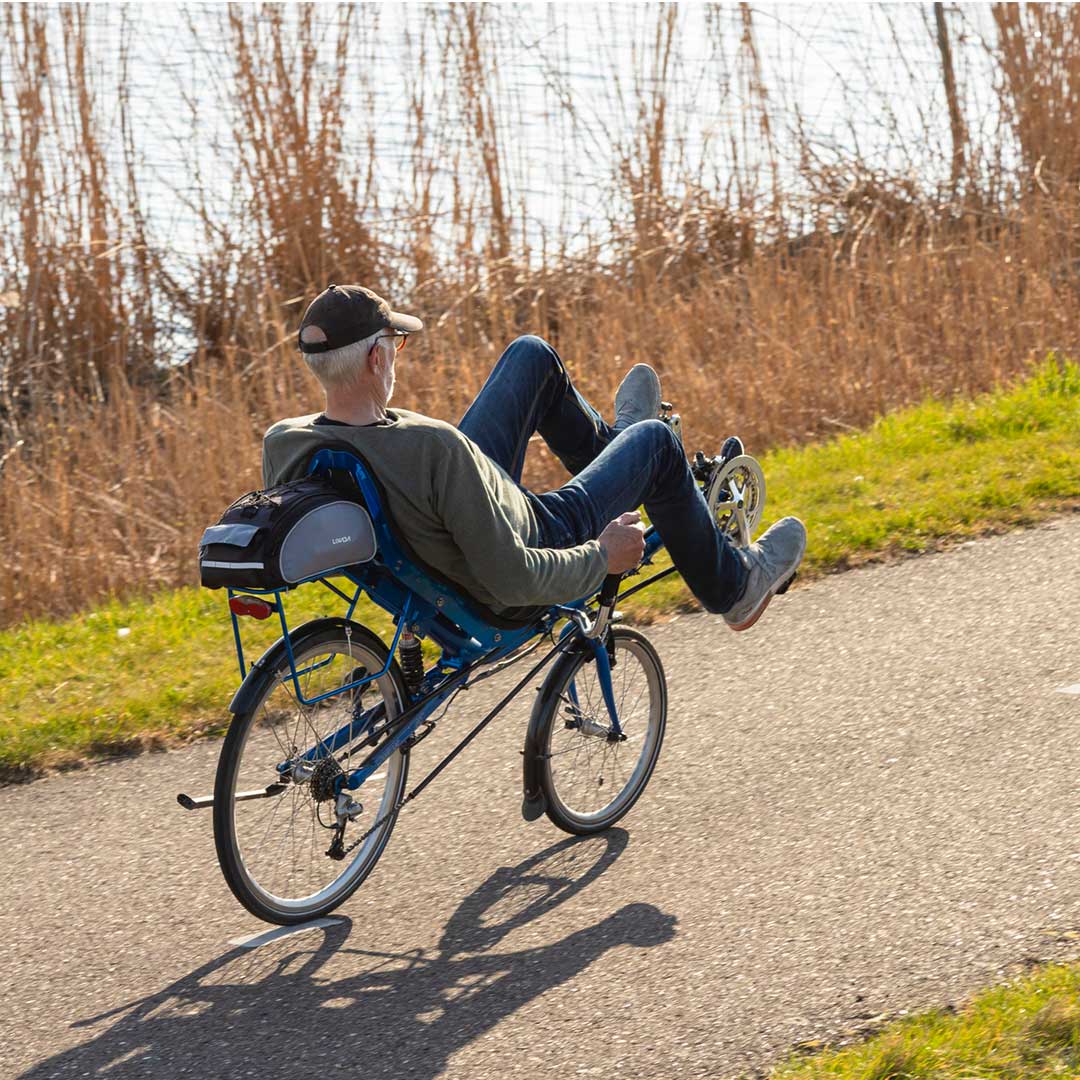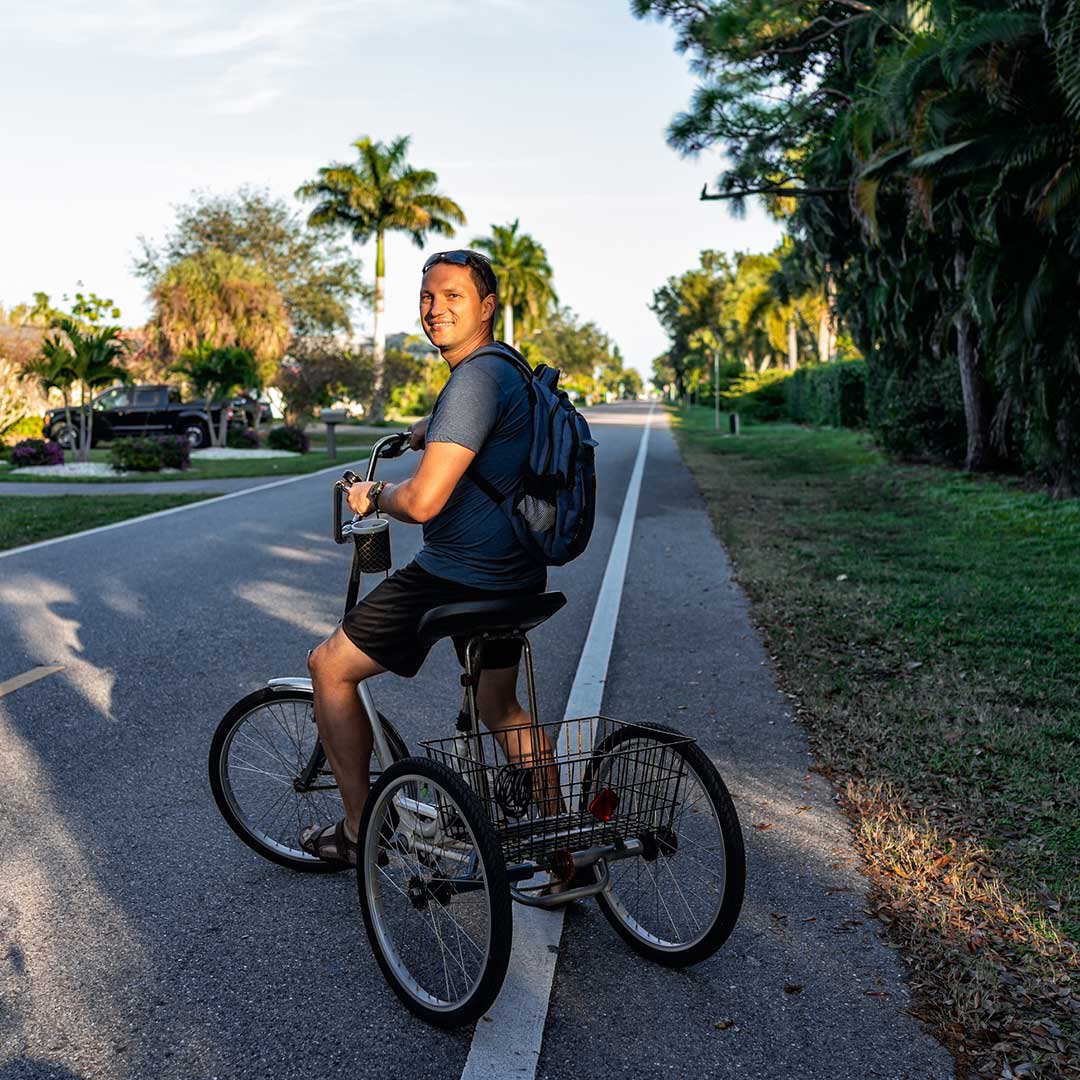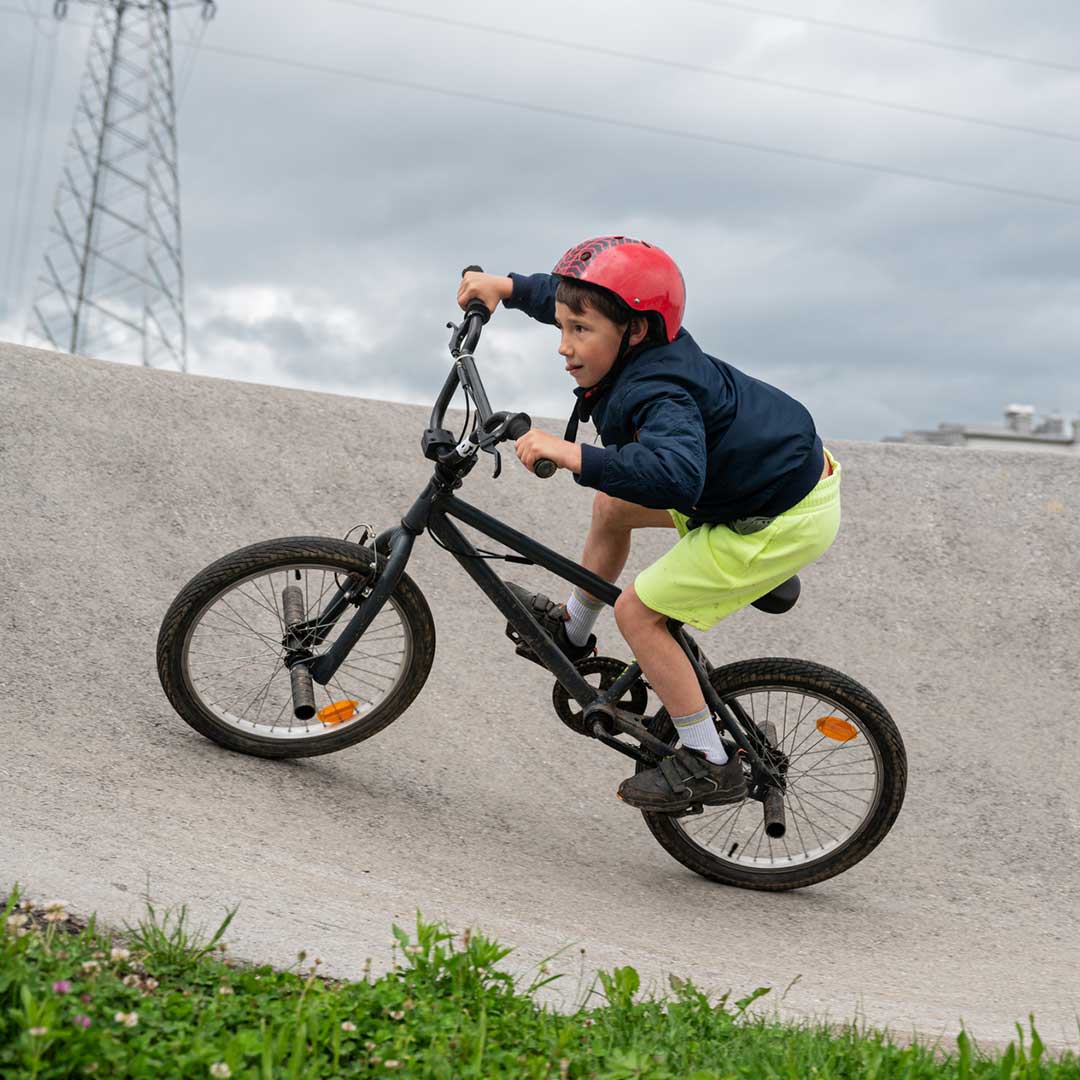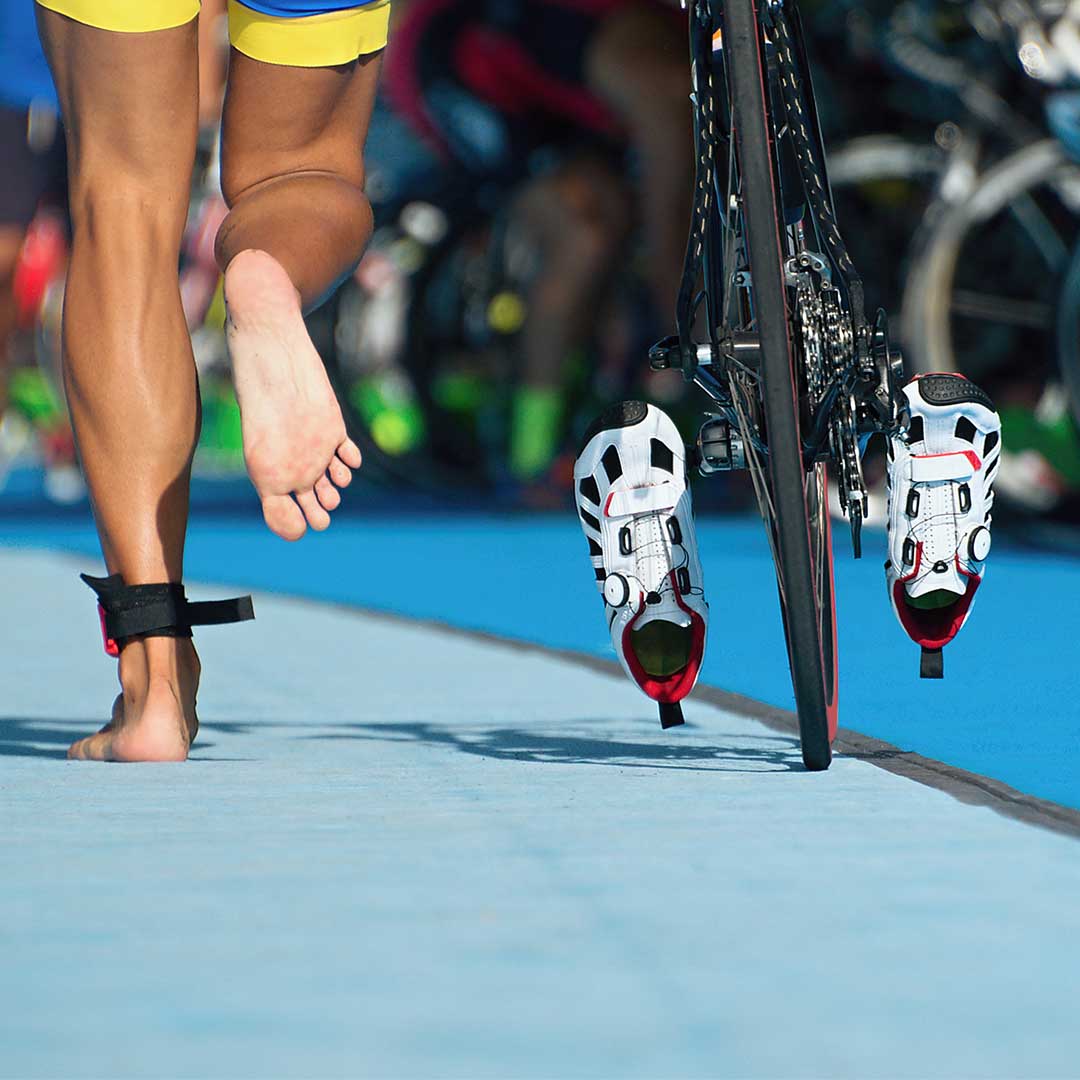Different types of bikes are designed for various riding styles and terrain, each with unique features and benefits. The types of bikes available range from mountain bikes built for rugged trails to sleek road bikes engineered for speed on pavement.

Choosing the right type of bike depends on factors like the intended use, personal preferences, and riding conditions. For example, mountain bikes have sturdy frames and wide, knobby tires, ideal for conquering rough off-road terrain. Meanwhile, road bikes have lightweight frames and thin, smooth tires designed for efficiency and speed on paved surfaces.
Bikes are more than a transportation tool as they make for a low-impact cardio activity that engages multiple muscle groups. The low-impact nature of riding means that you can get more out of your workout before the feeling of fatigue hits.
Other specialized bike types cater to specific needs and interests, enabling riders to pursue their passions and engage in various cycling disciplines. For example, e-bikes provide an extra boost with battery-powered motor assistance for easy commutes and less strain on your body.
The following 15 different types of bikes showcase the diverse range of options for cyclists.
- Mountain bike: A mountain bike is designed for off-road trails. It features a sturdy frame, wide tires, and multiple gears to handle rough terrain.
- Recumbent bike: A recumbent bike places the rider in a laid-back reclining position. This position has aerodynamic benefits that make for a comfortable ride.
- Tricycle: A tricycle is a three-wheeled vehicle that provides stability and ease of use. These bikes are ideal for young children and adults seeking extra support.
- Road bike: A road bike is built for speed and distance on paved roads. It has a lightweight frame, narrow tires, and drop handlebars.
- BMX: A BMX bike is a compact, durable bike designed for BMX racing and performing tricks with its 20-inch wheels.
- Tandem bike: A tandem is a type of bicycle built for two, allowing riders to pedal together, making it a popular choice for couples and friends.
- Fat bike: A fat bike is known for its oversized tires. It’s designed to ride on challenging surfaces like snow and sand.
- E-bike: An e-bike is equipped with an electric motor. The motor assists the rider’s pedal power, making climbing hills and traveling longer distances easier.
- Triathlon bike: A triathlon bike is engineered with an aerodynamic design and specialized handlebars for a more efficient riding position to suit triathletes better.
- Track bike: A track bike has a single-speed with no brakes and is designed for racing on a velodrome.
- Fitness bike: A fitness bike is a versatile piece of equipment that combines the speed of a road bike with the comfort and stability of a mountain bike.
- Utility bike: A utility bike is designed for practical use, such as commuting or carrying goods. They can be modified or equipped with racks and fenders to assist with daily activities.
- Women’s bike: A women’s bike is tailored to fit the average female body, with considerations for shorter reach and comfort.
- Gravel or adventure bike: A gravel or adventure bike is designed for a mix of on- and off-road use, featuring wider tires, a sturdy frame, and a comfortable riding position.
- Kid’s bike: A kid’s bike is scaled down for young riders and has safety and learning features to help children enjoy cycling.
Understanding the unique features and benefits of all types of bikes can help riders make an informed decision when choosing the perfect bicycle for their needs and preferences. Whether you’re an adrenaline-seeking mountain biker or a laid-back cruiser enthusiast, there is a bike out there for you. Below, we explore all kinds of bikes and the factors to consider before your purchase.
1. Mountain bike
A mountain bike is a high-performance cycle for off-road riding across different landforms. Its sturdy frame is made from durable materials tailored for comfort and handling. This all-terrain bike has reliable components, such as gear shifts, full-suspension systems, and adjustable seats, to help you get the most out of your ride.
View in gallery
A mountain bike is meant for heavy use and rough terrain, which is hard on wheel systems and tires. Depending on your riding type, you can choose between different tire widths and tread patterns. For example, a downhill trail rider in rough terrain will want tread that has large knobs to grip the dirt and keep you from wiping out.
The bike’s weight is going to influence the riding experience, with lighter bikes offering better maneuverability and heavy bikes providing a more intense workout. For example, cross-country riders should go for a compact, lightweight design with a medium front suspension for a balanced ride up and down hills. Meanwhile, riders looking to brave treacherous terrain will want to spring for the heavy build that can withstand the wear and tear.
This extreme form of biking is a thrilling way to improve your fitness routine while connecting with nature. However, while riding can always pose a risk of injury, mountain biking is an unpredictable sport, and you should follow safety standards, such as wearing a helmet. Additionally, a mountain bike needs regular inspections and repairs, which can be pricy because of the high-end materials and tech.
2. Recumbent bike
A recumbent bike places the rider in a laid-back reclining position designed for rider comfort, speed, and weight distribution. The frames include long-wheelbase, short-wheelbase, and three-wheeled versions. Depending on the materials, such as aluminum, steel, or carbon fiber, each offers unique maneuverability and aerodynamic advantages.
View in gallery
The large seat and backrest provide support to reduce strain, while adjustable frames and seats allow for a customized fit. Much of the bike is similar to traditional cycles, such as the gearing system, but aspects like the handlebar and brake position may require customization for those new to this style. Recumbent bikes are primarily built for the road, but some versions will feature suspension systems that make for a smoother ride.
The tires come in different sizes depending on the bike’s design. For example, a long-wheelbase recumbent bike might feature a small front wheel for better steering response. The emphasis on comfort and ergonomic design makes recumbent bikes a top choice for long-distance riders. Moreover, your bike will stand out among other cycles because of its unique designs and customization options. Despite the perks of this riding style, the bikes are large with complex features compared to traditional upright bikes.
3. Tricycle
A tricycle, or “trike,” is a three-wheeled vehicle for stability and support that accommodates riders of all ages and abilities. Tricycles might bring to mind the image of a child on a small three-wheeled bike, but they come in many sizes and are available in upright, recumbent, and semi-recumbent styles. This type of bike features robust frames made from lightweight aluminum to sturdy steel for durability and balance.
View in gallery
Trikes are a popular bike choice because they can adjust to different riders’ fits, needs, and comfort levels. For example, you can easily attach a hitch to the back of a trike to carry small loads behind your bike. Incorporate a suspension system, like in higher-end models, and your bike will better absorb bumps along the road. Moreover, tricycles let you add large wheels and thick tires for a smooth ride and firm grip.
Tricycles offer a unique and accessible cycling option for riders seeking an alternative to traditional bikes. The comfort and support from the extra wheel make it an excellent choice for those with balance issues or those who are hesitant to try biking. However, the large size and uncommon maneuvering procedures can pose an issue for people navigating small areas.
Additionally, tricycles feature design aesthetics and extra material that set them apart from standard options, making them more expensive. This price is further reflected in the maintenance requirements, which require more effort due to the extra wheel.
4. Road bike
A road bike features an aerodynamic design and lightweight construction for speed and efficiency on paved surfaces. The frames are sleek and crafted from lightweight materials like aluminum, carbon fiber, or titanium. These agile machines are engineered to optimize aerodynamics and provide comfort over long distances.
View in gallery
A road bike has adjustable seats and handlebars that give you a custom fit that helps reduce riding fatigue and enhance performance. Precision drivetrains, gears, and shifters keep the build lightweight, while some models incorporate minimal suspension or vibration-dampening features.
This type of bike is built for speed and needs reliable braking. Many will feature disc brakes, which have gained popularity for their superior stopping power and control. Ride quality is defined by responsiveness and agility, prioritizing speed and precise handling. However, the pursuit of lightweight design may sometimes come at the expense of durability.
Road bikes boast streamlined aesthetics with a range of color schemes and finishes. Each is designed to be responsive, agile, and prioritize speed. However, this lightweight build can come at the expense of durability. Repairs and maintenance add up, which affects the price of road bikes. They fluctuate from accessible entry-level models to premium bikes used in professional racing, with each tier requiring proper upkeep.
5. BMX
A BMX bike is a trick bike designed for off-road racing and stunt riding. This compact, tough bike is built to withstand the rigors of jumps, drops, and crashes for adrenaline-seeking cyclists. The small, lightweight frame style emphasizes maneuverability over ergonomics, with smaller seats and a focus on rider movement.
View in gallery
The parts on a BMX bike are chosen for their ability to handle rough treatment from riders. There’s typically a single gear, simple brake setup, and the absence of a front brake that contribute to a lighter, more resilient machine. Suspension is rarely found on BMX bikes, as it would absorb the energy needed for launching off jumps and executing stunts. Braking systems on a BMX bike usually consist of a rear U-brake or V-brake. However, some riders prefer to go without brakes to boost their tricks.
BMX bikes roll on 20-inch wheels wrapped in wide, knobby tires that offer excellent grip on different surfaces. The ride quality is geared towards performance, responsiveness, and sturdiness over comfort. This allows riders to tackle technical courses and perform gravity-defying feats with confidence. Many BMX bike brands feature a bold aesthetic with diverse colors and designs.
Maintenance requirements are relatively low due to the simple design, but regular checks are crucial given the rough treatment. One perk of riding a BMX bike is that the cost is accessible for new riders. Moreover, you can develop superior bike handling skills, increase your fitness, and experience the thrill of stunts and competition. However, be mindful of the higher risk of injury and limited versatility. BMX bikes offer a unique blend of performance, but the extreme stunts should be left to the professionals.
6. Tandem bike
A tandem bike is a bicycle built for two that allows cyclists to share the workload and enjoy a communal riding experience. The frames are significantly longer than a single-rider bicycle and made from heavy-duty materials that can withstand the additional weight.
View in gallery
Adjustable seats and handlebars are essential to ensure a comfortable ride for both cyclists. While high-performance rim brakes or disc brakes provide the necessary stopping power to safely manage the increased mass and momentum.
High-quality wheels and tires help withstand the additional load and contribute to a smooth, stable ride. Despite the increased weight, the combined power of two riders often results in excellent ride quality because the team can work together to maintain higher speeds with less individual effort.
Tandem bikes have a distinctive appearance that distinguishes them from single-rider bicycles. They can be personalized with various paint jobs and designs to reflect the style of the riding duo. However, a tandem bike is a costlier purchase because it requires specialized parts.
Due to the complexity of tandem systems, maintenance requirements are more demanding than solo bikes. Regular upkeep and adjustments are necessary to keep the bicycle in optimal condition. However, tandem bikes offer a unique and rewarding way for two people to enjoy the sport of cycling together.
7. Fat bike
A fat bike is known for having massive 3.8-inch or wider tires and broad rims. It’s designed to conquer soft, unstable terrain like snow, sand, and mud. The oversized tires have low ground pressure that keeps riders cruising over surfaces that would bog down a traditional mountain bike.
View in gallery
These bikes feature sturdy aluminum, steel, or carbon fiber frames. Their geometry and adjustable features are designed to accommodate the gigantic tires and provide a comfortable, stable ride.
This fat wheel style uses wide-range drivetrains to ensure reliability in harsh environments. While suspension is only sometimes necessary due to the shock-absorbing properties of the large tires, some models incorporate front or full suspension for added comfort and control. Hydraulic disc brakes deliver consistent stopping power, even on slippery or loose surfaces.
While the beefy tires and reinforced frames contribute to a higher overall weight, fat bikes’ unique capabilities make up for the added heft. Aesthetically, these bikes range from understated to eye-catching, with their massive tires giving them an unmistakable presence.
Prices for fat bikes vary, but the additional material needed to produce the tires and frames results in a higher overall price tag. This influences maintenance as special attention needs to be paid to tire pressure and drivetrain components. Despite the upkeep, a fat bike is an easy, comfortable ride that encourages people to stray from the beaten path.
8. E-bike
An electric bicycle, or e-bike, integrates an electric motor with a traditional bicycle framework to assist with propulsion. The e-bike’s motor makes it easier to cover longer distances, climb steep hills, and reduce overall effort. Frames are constructed from materials like aluminum or carbon fiber and are designed to accommodate the motor and battery while distributing weight evenly.
View in gallery
An e-bike features technology such as high-quality drivetrains and user-friendly power systems that separate this kind from standard bikes. Suspension systems, particularly off-road models, provide a smoother ride over rough surfaces, while hydraulic disc brakes offer consistent and powerful stopping power.
E-bikes can reach high speeds and need durable, puncture-resistant tires to accommodate the motor’s increased weight and power. The ride quality is characterized by ease and efficiency, with electric assist smoothing out challenges. However, the added weight of the motor and battery can affect handling and transport.
Modern e-bike designs integrate electric components for attractive aesthetics and unique designs. However, the price will reflect the advanced features and stylizations. Maintenance requirements are more demanding compared to traditional bicycles, with regular checks needed for the electrical system. Despite these drawbacks, e-bikes have revolutionized cycling by making it more inclusive and appealing to a wider range of riders.
9. Triathlon bike
A triathlon bike combines aerodynamics, comfort, and speed to support optimal triathlete performance. These highly specialized machines are engineered to help athletes achieve their best possible times on race day. Carbon fiber frames are meticulously crafted with aerodynamics as the top priority. Steeper seat tube angles and lower handlebars create an aggressive riding position that minimizes drag and maximizes efficiency.
View in gallery
Adjustable components like seat posts, aero bars, and stem lengths allow for a personalized fit that promotes aerodynamics over long distances. High-end features such as electronic shifting and aerodynamic wheelsets further enhance performance.
Suspension is generally not found on triathlon bikes, as it would compromise speed while braking systems are seamlessly integrated into the frame to minimize drag. The ride quality of a triathlon bike is laser-focused on speed and efficiency and relies on tubular or clincher tires carefully selected for speed and efficiency. Every aspect of the bike, from the frame to the components, is designed to minimize weight and maximize acceleration and climbing ability.
Clean lines and integrated design elements give triathlon bikes a sleek, visually appealing aesthetic that aligns with their performance-driven purpose. These cutting-edge machines come with a hefty price tag, especially at the top tier, where advanced materials and customization options are prevalent. Due to their sophisticated components and need for precise adjustments, triathlon bikes require more extensive maintenance than other types of bicycles. However, the benefits a triathlon bike can offer an athlete are substantial, and they can greatly improve race times with the right setup.
10. Track bike
A track bike is a fixed-gear design for racing that does not have freewheeling capabilities. This setup allows for direct power transfer and maximum efficiency. Lightweight materials are used to construct frames with shorter wheelbases and tighter angles, enabling quick acceleration and nimble handling.
View in gallery
Aerodynamics and power output take precedence over long-term comfort. Components are minimalistic and high-performance, with a fixed gear, solid rear wheel, or deep-section rims. Slowing or stopping is achieved through pedal resistance, demanding high skill and control from the rider.
A track bike’s sleek, minimalistic aesthetics reflect their singular focus on racing performance. Prices range from affordable entry-level models to cutting-edge machines ridden by elite competitors.
Due to its simplicity, this precise machine requires less maintenance than other bike types. However, regular inspection and precise tuning are still required to ensure peak performance and safety. Riding a track bike offers the thrill of velodrome racing and helps develop advanced bike handling skills. While the simplicity of fixed-gear riding can be appealing, these bikes have limited utility outside the track. Mastering the techniques of fixed-gear riding and track tactics also involves a steep learning curve, and the high speeds of velodrome racing carry the risk of serious crashes.
11. Fitness bike
A fitness bike is a versatile cycle that’s suitable for paved paths to light gravel roads and offers a blend of speed, agility, and comfort. A fitness bike balances a road bike’s lightweight speed and a mountain bike’s solid build. The frame, typically made from aluminum or carbon fiber, features geometry that puts the rider in a more upright position for comfort and efficient power transfer.
View in gallery
Fit and comfort are prioritized with adjustable stems, ergonomic handlebars, and well-cushioned seats. Components include different gears for assorted terrain and disc brakes for superior stopping power. The tires are slightly wider and puncture-resistant for stability and traction on mixed surfaces.
The bike is engineered with comfort in mind for handling long distances, with responsiveness and agility for quick city rides and stability for longer workouts. Aesthetics feature sleek, modern designs with clean lines and attractive color schemes. The benefits of using a fitness bike include versatility, comfort, and efficiency for different riding conditions and goals. However, this kind of bike can lead to compromised performance compared to specialized bikes in specific environments. For example, it may not perform as well on rough mountain trails where a dedicated mountain bike’s suspension and frame are advantageous.
12. Utility bike
A utility bike is designed for practicality and versatility to help with everyday needs like commuting or transporting goods. These bikes prioritize durability, comfort, and load-carrying capacity, making them the workhorses of the cycling world. The weight distribution requires robust steel or reinforced aluminum frames to support the potential for heavy loads. The engineering reflects this purpose and ensures stability and comfort with upright riding positions, wide cushioned seats, and adjustable handlebars and seat posts.
View in gallery
Components are chosen for durability and ease of maintenance. Internal gear hubs, belt drives, and disc brakes provide consistent performance and reliable stopping power in all conditions. Utility bikes embrace function over form, with practical features like fenders, chain guards, and integrated lighting. Moreover, classic design elements add timeless style to these reliable machines.
Utility bikes are an eco-friendly alternative to cars because of their versatility and durability. They can easily handle the rigors of daily use and make everyday tasks more enjoyable. However, their weight and bulk may affect maneuverability and ease of storage, and premium features or customization can come at a higher initial cost.
13. Women’s bike
A women’s bike is designed to accommodate unique body proportions and comfort preferences associated with female riders. These bicycles consider torso length, leg length, shoulder width, and hip width to make bike riding more fun and accessible for everyone.
View in gallery
The frames feature a shorter top tube and a taller head tube for a riding position that reduces strain on the back, neck, and shoulders. Women-specific saddles, narrower handlebars, and adjustable brake levers prioritize fit and comfort. Meanwhile, components, including gears, cranks, and suspension systems, are selected to match riders’ power output and cadence preferences and intended use.
The aesthetics feature thoughtful styling and color schemes appealing to many personality types. Women’s bikes are priced similarly to men’s bikes, with plenty of affordable entry-level options to choose from. Moreover, the traditional build style means maintenance requirements are similar to men’s bikes. However, limited selection in some styles or sizes and occasionally higher prices for comparable specifications can be drawbacks.
14. Gravel or adventure bike
A gravel or adventure bike is designed for versatility across gravel roads, forest tracks, paved roads, and trails. This bike type can do it all and blends the speed of road bikes with the ruggedness of mountain bikes. It’s a superior ride for those who crave variety and spontaneous exploration.
View in gallery
Gravel bike frames have long front centers and slackened head angles for predictable steering and control. Moreover, the wide tires and knobby tread make for a comfortable ride that keeps you gripping the trails. An adventure gravel bike can take you offroad, but the suspension is minimal and may include short-travel forks or seat posts to smooth rough terrain.
Adventure bikes aim to balance comfort, efficiency, and off-road prowess. The ride is stable yet responsive, and the wide handlebars and plush saddle keep you comfy all day. While they’re heavier than road bikes, that extra heft translates to dependable strength when you’re way out in the boonies.
Aesthetically, gravel grinders have a distinct style that combines the sleek lines of road machines with the muscular features of mountain bikes. The modifications and design you choose will influence the price, but there’s a suitable gravel rig for every budget. Remember that adventure bikes undergo heavy use and require more maintenance than road bikes, but that’s part of the fun. Every ride with an adventure bike is an opportunity for discovery, whether it’s a multi-day biking journey or a spirited mixed-terrain group ride.
15. Kid’s bike
A kid’s bike refers to smaller builds for young riders to have a safe and enjoyable introduction to cycling. The materials used for a kid’s bike are chosen for their durability and lightness so children can maneuver their bikes with ease.
View in gallery
This type of bike ranges in style and size to better accommodate little bodies with developing motor skills. Therefore, components are simplified, meaning smaller brake levers, fewer or no gears, and guarded drivetrains. Suspension and braking systems will be left off the smallest trikes, while larger kid’s bikes might feature added suspension and hand or rear coaster brakes.
Kid’s bikes can be standard two-wheeled or tricycle styles with smaller back wheels to help with balance. For example, the Radio Flyer Red Rider is an iconic kid’s tricycle that introduces kids as young as 2 to the sport. It’s important to consider the weight of a kid’s bike because the heavier it is, the more difficult it will be for a child to handle rough terrain or obstacles.
Bikes for kids can have fairly low maintenance requirements because of the small builds and limited components. They come in many colors and patterns, with fun add-ons like bells or streamers to personalize their ride. Moreover, they instill a love of physical activity and adventure in a kid’s mind, which will benefit them for years to come. However, kids have growth spurts and are rough on their toys. Therefore, replacements will be needed sooner rather than later.
What is a bike for?
A bike is used for transportation, recreation, and health and wellness. Firstly, bikes are a cost-effective alternative to motor vehicles by allowing users to bypass traffic, easily find parking, and access routes not available to larger vehicles. This versatility makes them particularly useful in urban settings and communities with developed cycling infrastructure.
Secondly, cycling is a universally enjoyable recreation activity that allows people of all ages to explore nature, spend quality time with friends and family, and enjoy leisurely rides. Recreational groups will meet to partake in bike races, fun rides, and even alternative sports like bike polo.
Thirdly, biking is acclaimed for its significant health advantages. It is an excellent source of aerobic exercise that improves cardiovascular health by increasing heart rate and is an efficient calorie-burning workout. Cycling is a low-impact exercise that’s an option for those wishing to reduce the risk of joint strain while enhancing muscle strength and endurance.
What are the factors to consider in choosing a bike?
There are five main factors to consider when choosing a bike to ensure that it meets your specific needs, preferences, and riding goals. Firstly, the type of riding you plan is paramount because bikes are designed for different purposes. For example, a road bike won’t be able to grip the rugged trails like a mountain bike and is a poor choice for off-road riding.
Secondly, the frame material significantly impacts the bike’s weight, durability, and price. Common materials include aluminum, steel, carbon fiber, and titanium, which each offer a unique balance of strength, comfort, and cost. Thirdly, size and fit help ensure comfort and efficiency. A bike that matches your body dimensions will provide a more enjoyable and effective riding experience.
Fourthly, suspension options vary depending on the bike type. For example, mountain bikes come with front and sometimes rear suspension to absorb shock, while road bikes typically do not have suspension to maintain efficiency. Lastly, wheel size affects the bike’s handling and performance. Standard sizes include 26-inch, 27.5-inch, and 29-inch wheels, with larger wheels taking on obstacles more easily and smaller wheels being more agile and having quicker acceleration.
What is the average price of bikes?
The average price of bikes depends on a combination of tier, type of bike, material, and brand reputation. Entry-level bicycles with aluminum frames and basic components fall below the $1,000 mark to provide durability and cost-effectiveness for casual or beginner riders. For example, the Sirrus 1.0 from Specialized is regularly priced at $650.
Mid-range bikes include more specialized choices and can cost up to $2,000. These bikes come with higher-quality aluminum or entry-level carbon fiber frames, better suspension systems, and improved performance and comfort for serious enthusiasts. For example, the Bad Boy 2 is a mid-level ride from Cannondale that starts at $1,425.
High-end premium bikes, which can cross the $10,000 threshold, are designed for competitive racing or advanced off-road riding. These high-performance models are built with top-tier carbon fiber or titanium frames, advanced suspension systems, and the best available components for maximum efficiency, weight savings, and durability. For example, Canyon’s Ultimate CFR eTap road bike costs $9,999.
Which brand of bike is the best?
Trek is one of the best bike brands due to its commitment to creating innovative designs and manufacturing high-quality bicycles. Trek bikes are designed with careful attention to detail and cutting-edge technology for a superior riding experience. The quality and innovation are evident in their bikes’ performance, durability, and comfort. Trek is so confident in its quality that it offers extensive warranties to cover your bike down the road.
Trek produces a wide range of bicycle types, including road, mountain, electric, and hybrids. This variety allows riders to choose a bike that best suits their specific needs, whether navigating city streets, tackling rugged trails, or enjoying leisurely rides through the countryside.
Can an electric bike be considered a motorcycle?
Yes, an electric bike can be considered a motorcycle if local regulations deem it so. This depends on the e-bike’s speed, power, and features, such as the absence of pedals. Some jurisdictions require e-bikes to exceed certain speed and power thresholds to obtain registration, insurance, and licenses or follow alternative protocols. For example, an e-bike in Virginia needs to fall into one of three categories of electric bikes, or else it’s considered a moped or one of the different types of motorcycles and must conform to alternative DMV requirements.
These regulations vary by location, with some areas having specific categories that differentiate between lower-powered and higher-powered bike models. As an e-bike owner, you should understand and comply with local laws to make sure you use your e-bike legally and safely.
